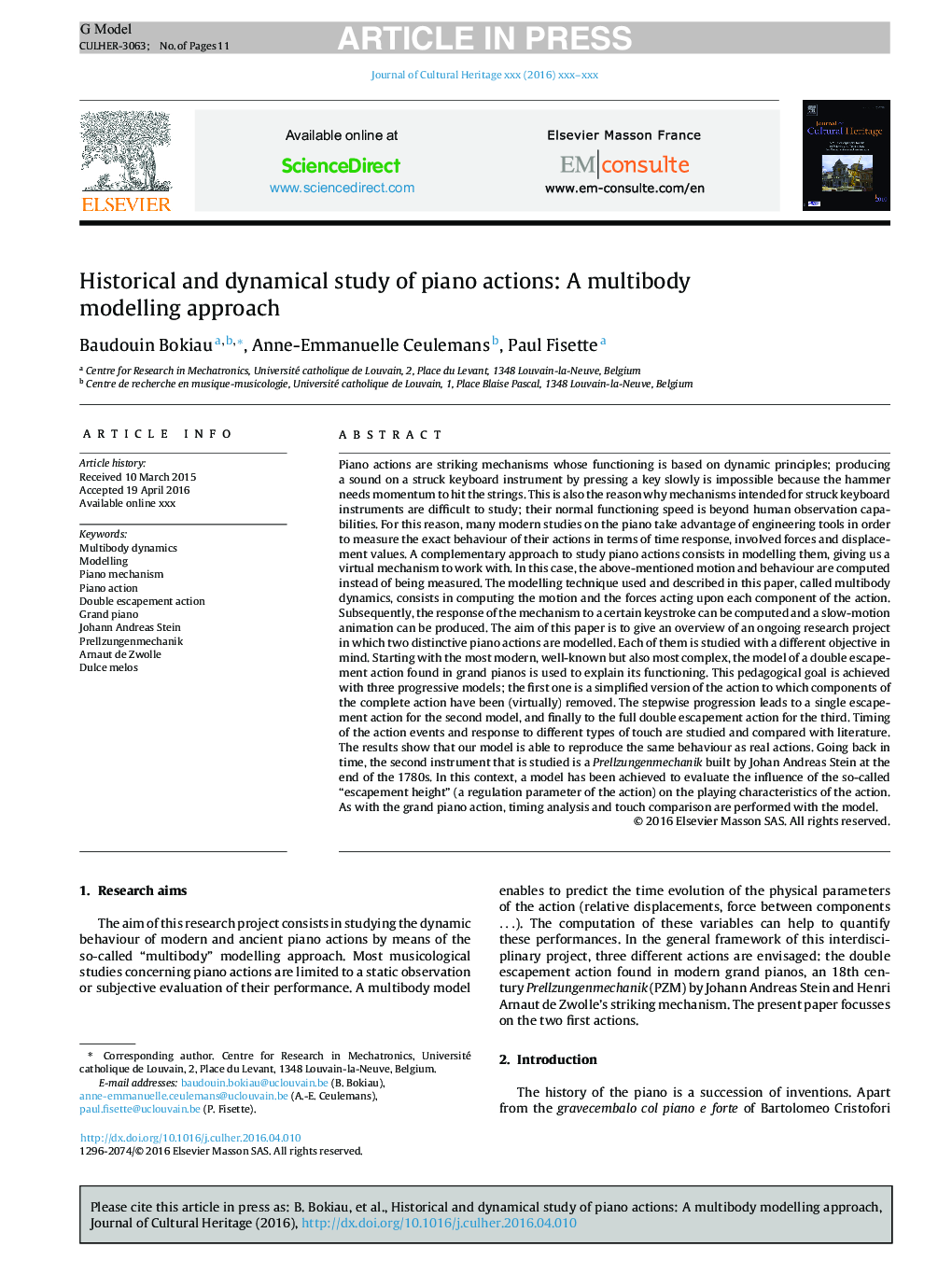| کد مقاله | کد نشریه | سال انتشار | مقاله انگلیسی | نسخه تمام متن |
|---|---|---|---|---|
| 5112730 | 1377894 | 2017 | 11 صفحه PDF | دانلود رایگان |
عنوان انگلیسی مقاله ISI
Historical and dynamical study of piano actions: A multibody modelling approach
ترجمه فارسی عنوان
مطالعه تاریخی و دینامیکی اقدامات پیانو: رویکرد مدل سازی چند جانبه
دانلود مقاله + سفارش ترجمه
دانلود مقاله ISI انگلیسی
رایگان برای ایرانیان
موضوعات مرتبط
مهندسی و علوم پایه
شیمی
شیمی تئوریک و عملی
چکیده انگلیسی
Piano actions are striking mechanisms whose functioning is based on dynamic principles; producing a sound on a struck keyboard instrument by pressing a key slowly is impossible because the hammer needs momentum to hit the strings. This is also the reason why mechanisms intended for struck keyboard instruments are difficult to study; their normal functioning speed is beyond human observation capabilities. For this reason, many modern studies on the piano take advantage of engineering tools in order to measure the exact behaviour of their actions in terms of time response, involved forces and displacement values. A complementary approach to study piano actions consists in modelling them, giving us a virtual mechanism to work with. In this case, the above-mentioned motion and behaviour are computed instead of being measured. The modelling technique used and described in this paper, called multibody dynamics, consists in computing the motion and the forces acting upon each component of the action. Subsequently, the response of the mechanism to a certain keystroke can be computed and a slow-motion animation can be produced. The aim of this paper is to give an overview of an ongoing research project in which two distinctive piano actions are modelled. Each of them is studied with a different objective in mind. Starting with the most modern, well-known but also most complex, the model of a double escapement action found in grand pianos is used to explain its functioning. This pedagogical goal is achieved with three progressive models; the first one is a simplified version of the action to which components of the complete action have been (virtually) removed. The stepwise progression leads to a single escapement action for the second model, and finally to the full double escapement action for the third. Timing of the action events and response to different types of touch are studied and compared with literature. The results show that our model is able to reproduce the same behaviour as real actions. Going back in time, the second instrument that is studied is a Prellzungenmechanik built by Johan Andreas Stein at the end of the 1780s. In this context, a model has been achieved to evaluate the influence of the so-called “escapement height” (a regulation parameter of the action) on the playing characteristics of the action. As with the grand piano action, timing analysis and touch comparison are performed with the model.
ناشر
Database: Elsevier - ScienceDirect (ساینس دایرکت)
Journal: Journal of Cultural Heritage - Volume 27, Supplement, October 2017, Pages S120-S130
Journal: Journal of Cultural Heritage - Volume 27, Supplement, October 2017, Pages S120-S130
نویسندگان
Baudouin Bokiau, Anne-Emmanuelle Ceulemans, Paul Fisette,
